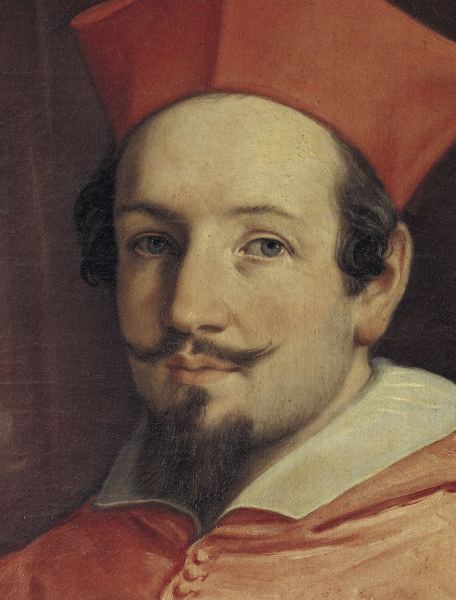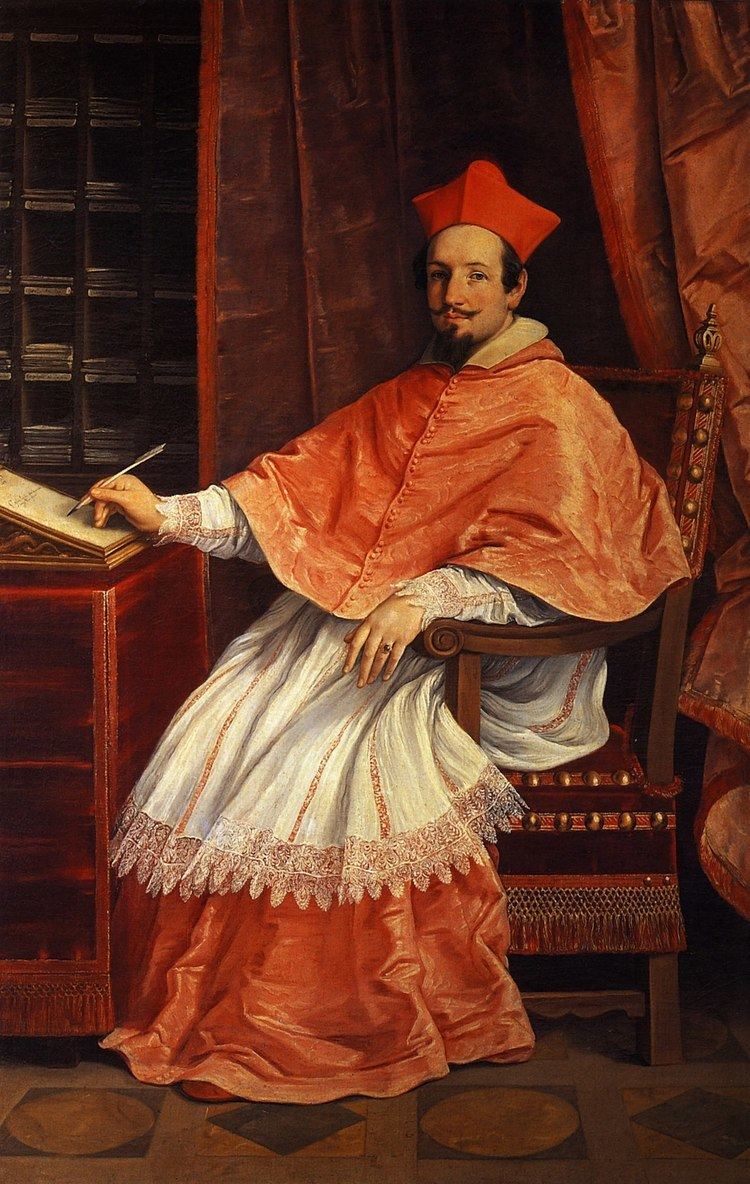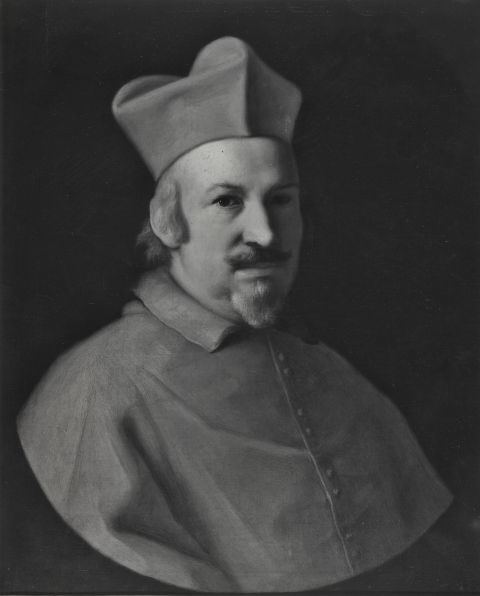Ordination 1623 Nationality Italian | Name Bernardino Spada Consecration December 8, 1623 | |
 | ||
Rank Cardinal-priest, later cardinal-bishop Place of burial San Girolamo della Carita, Rome, Italy Parents Daria Albicini, Paolo Spada Siblings Clemente Spada, Orazio Filippo Spada, Camilla Spada | ||
Bernardino Spada (21 April 1594 – 10 November 1661) was an Italian Cardinal of the Roman Catholic Church and a patron of the arts whose collection is housed in the Palazzo Spada in Rome.
Contents
- Early life
- Ecclesiastic career
- War of Castro
- Andrea Casale
- Later ecclesiastic career
- Episcopal succession
- Books
- References

Early life

Spada was born in Brisighella, current province of Ravenna (Romagna). His father was the rich merchant Paolo Spada (unrelated to the Spada family of ancient nobility) who had directed him early on to a career in the church, though the generations before his had been colliers. Bernardino studied law in Bologna, Perugia and Rome and received a doctorate. He served in the Papal Curia from 1617.
Ecclesiastic career
On December 8, 1623, he was consecrated bishop in the church of S. Luigi de' Francesi in Rome by Cardinal Guido Bentivoglio d'Aragona, assisted by Guillaume du Nozet, Titular Archbishop of Seleucia, and by François Boyvin de Péricard, Bishop of Evreux. In December 1623 he was appointed papal nuncio to the court of France, in preparation for which he was ordained titular archbishop of Tamiathis. He served as nuncio until 1627, when he became papal legate in Bologna. He was made a cardinal 19 January 1626 by Pope Urban VIII. When the plague epidemic hit Bologna in 1630/1631, he helped organize the health care system there.
From 1631 he served again in Rome, filling several influential positions in the Curia. In 1632 he purchased what is now called the Palazzo Spada in the rione Regola, facing Piazza Capo di Ferro with a garden looking over the Tiber, and commissioned Francesco Borromini to modify it for him in a more Baroque style, to house his growing collections.
War of Castro
During the First War of Castro he served as plenipotentiary of Pope Urban VIII; sent to negotiate a truce with the Duchy of Parma, together with his brother Virgilio. Spada successfully negotiated a truce but when the pope's military leaders became aware that the dukes were massing troops to counter their own (in case discussions with Spada came to naught), Urban VIII declared the articles of peace null and void and claimed Spada had negotiated them without his consent. Spada was furious and later published a manifesto detailing his version of events which, according to contemporary John Bargrave, many accepted to be the truth.
Andrea Casale
In his profile of Spada, from his own observations and those of others, Bargrave also recounts Spada's dealings with Bologna nobleman Andrea Casale. Casale had been sent to Germany to fight in the armies of the Holy Roman Empire during the 30 Years' War where he was captured. While a prisoner, Casale inherited a large estate which Spada then came to manage on behalf of Casale's relatives (who expected Casale to never return). Casale was eventually released and returned to Bologna where he had great difficulty proving he was, in fact, Andrea Casale. But a nurse who had treated Casale as a young man came forward and identified him from specific marks on his body. Nonetheless, Spada had the man imprisoned where he was beaten to death. Bargrave recounted that the story had been told to him in Rome, "much to the Cardinal's disadvantage".
Later ecclesiastic career
Spada was successively Bishop of Albano, Frascati, Sabina and Palestrina. Bernardino supported the church careers of several of his family members. His nephew Giovanni Battista Spada became cardinal in 1654 and his great-nephew Fabrizio Spada became cardinal in 1675 and Cardinal Secretary of State in 1691. He died in Rome in 1661 and was interred in the family grave in the church of San Girolamo della Carità.
Episcopal succession
While bishop, he was the principal consecrator of:
He also ordained John Leyburn (1646) as priest.
